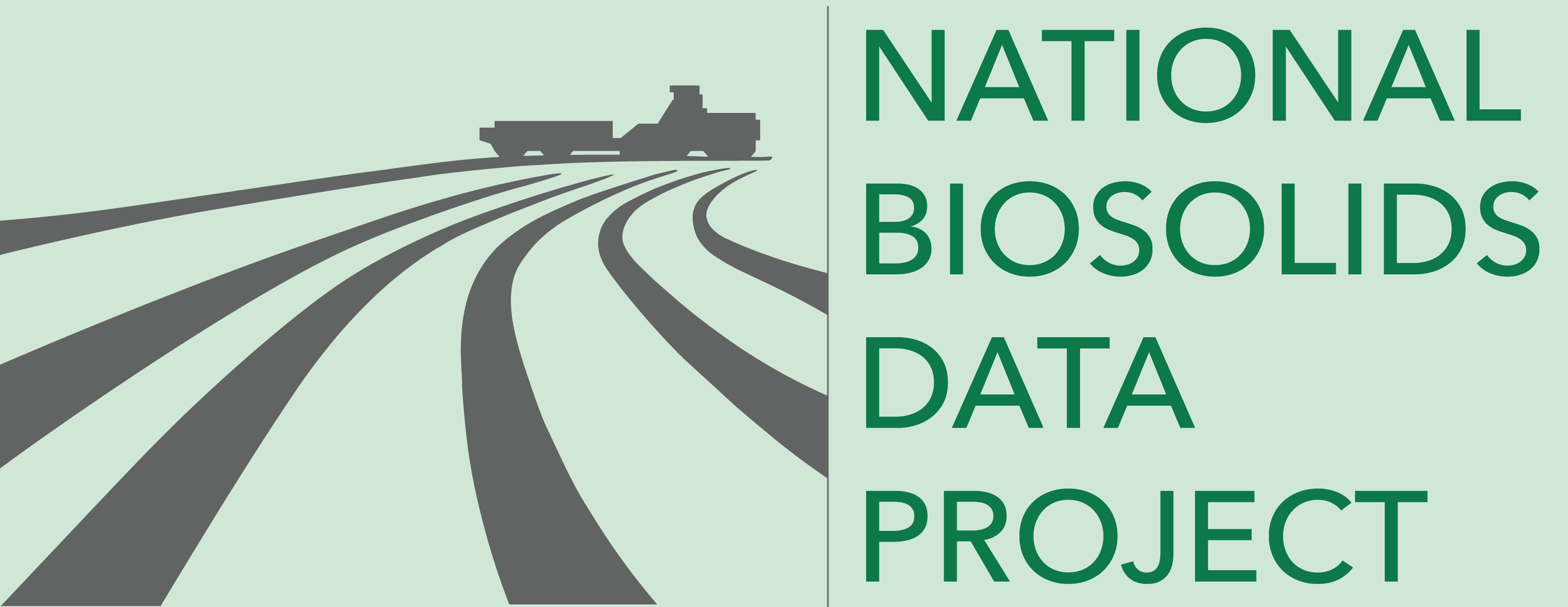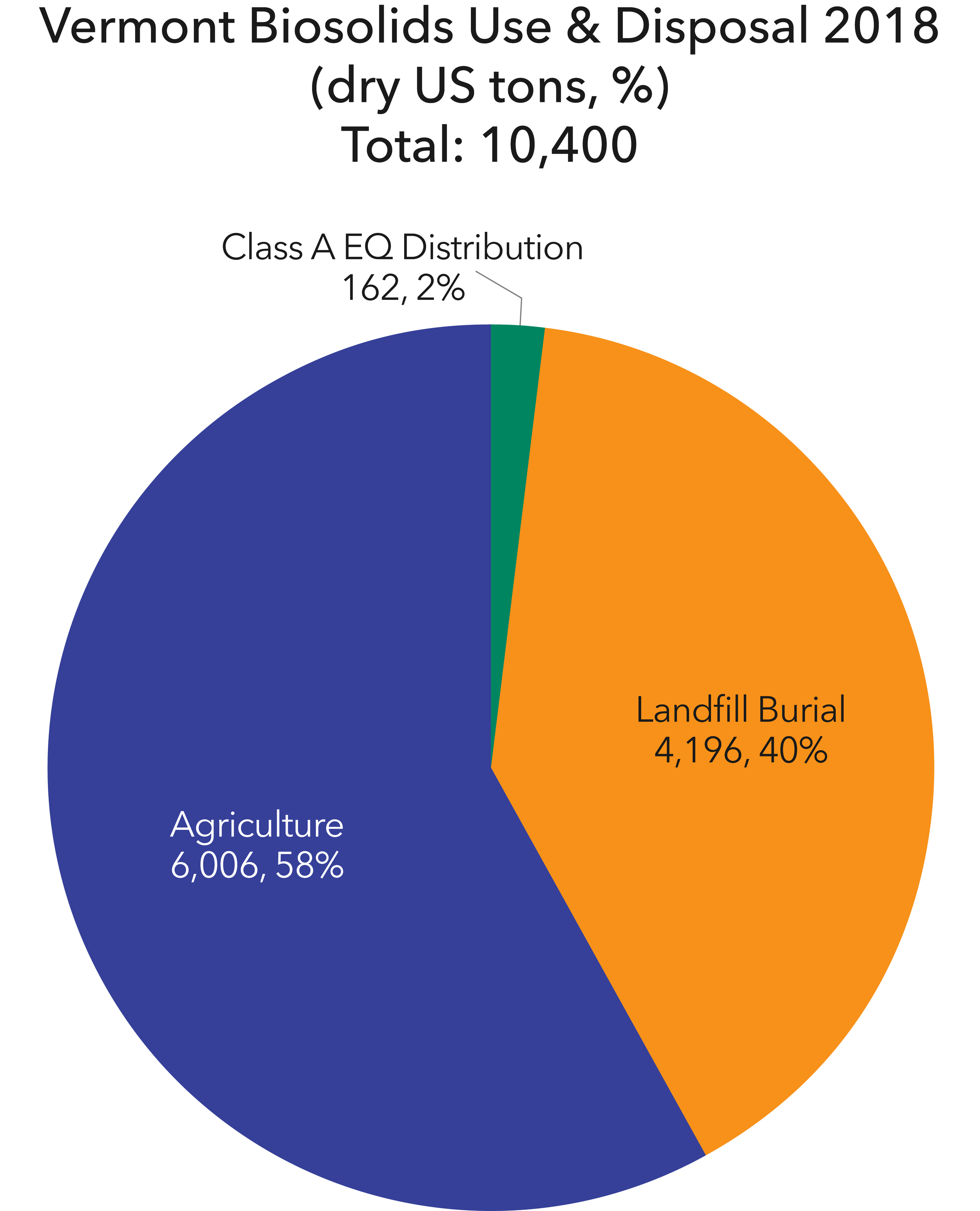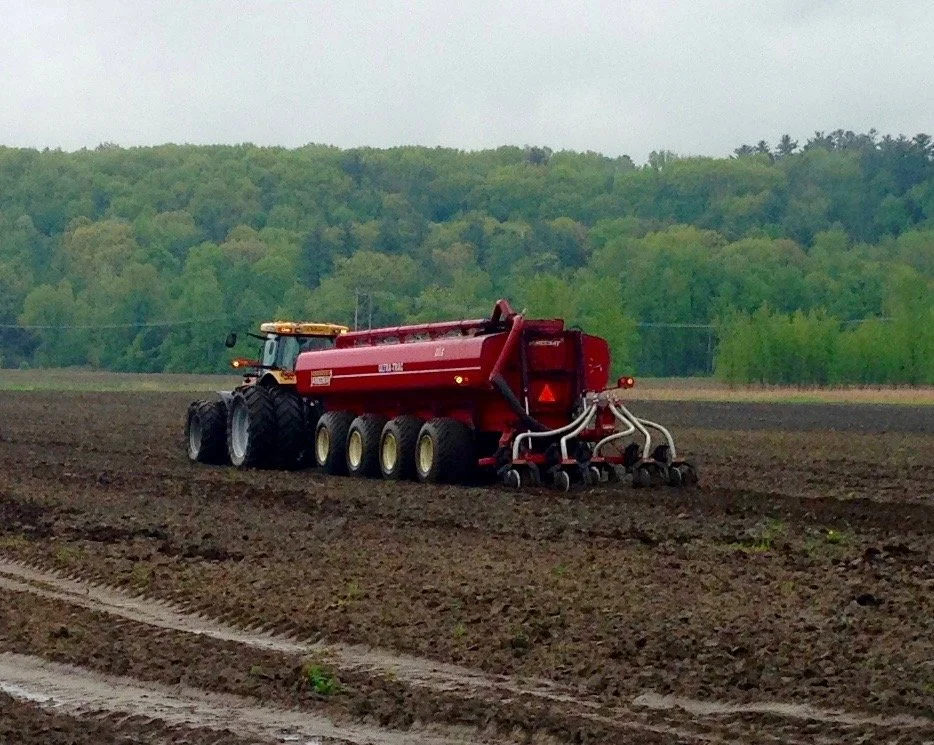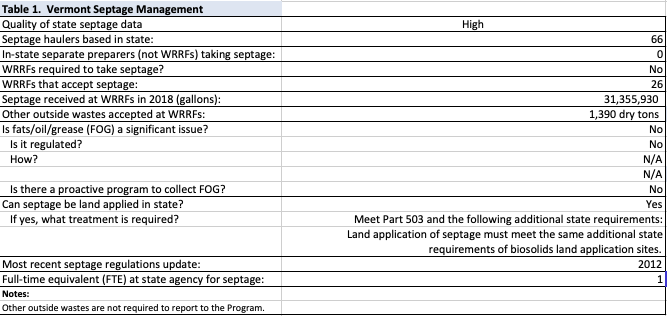State Data
Confidence in data for this state:
HIGH
2018 data unless noted.
Definitions
Terms used on this website and in data sets are defined & discussed here.
Biosolids at Grasslands, the facility in upstate NY where biosolids from the Burlington, VT, area are treated to EQ and land applied. Photo courtesy of Casella.
Loading out biosolids at Grasslands. Photo courtesy of NEBRA.
Liquid Essex Junction biosolids being land applied on farmland that neighbors the WRRF. Photo courtesy of NEBRA.
State Statistics Dashboard
State Summary
● Vermont is a relatively small, rural state with some robust and famous local agriculture – mostly dairy (think Ben & Jerry’s and Cabot). But little local municipal biosolids is used on Vermont farms. In 2018, most was trucked from the populated Burlington area to a Chateaugay, New York alkaline stabilization facility owned and operated by Casella Organics. The resulting bulk Class A EQ biosolids were land applied on farms in northern New York and southern Quebec.
● Several Vermont communities – Essex Junction, St. Johnsbury, etc. – also relied on bulk land application, but with biosolids treated to Class B.
● A few communities have advanced Class A treatments, including Middlebury’s alkaline stabilization system and Brattleboro’s and South Burlington’s 2-phased anaerobic digestion (2PAD). Several border towns send solids out of state for composting (e.g. Hartford/White River Junction, Bennington), while Springfield and Wilmington make Class A compost locally.
● Vermont has one remaining large commercial landfill, and it accepts municipal biosolids from a lot of Vermont water resource recovery facilities (WRRFs). Two small communities (Troy, Jay) rely on lagoons for long-term storage of their wastewater solids.
● Septage was also land applied in 2018 at several long-term farm sites, but malodors and other concerns were beginning to put pressure on septage land application.
● Vermont biosolids, septage, and other residuals are overseen by the state’s Department of Environmental Conservation, Waste Management and Prevention Division, with strict permitting and regulation of all forms of residuals management. Details at https://dec.vermont.gov/waste-management/residuals-management, which includes a thorough May 2018 report (https://dec.vermont.gov/sites/dec/files/wmp/residual/RMSWhitePaper20180507.pdf).
● Concerns about PFAS have grown since 2018, and all VT biosolids and septage land application sites have since been tested for soil and groundwater levels of PFAS. Out of an abundance of caution, a few have been closed to further land application. Because the state has adopted some of the lowest groundwater PFAS limits anywhere, as of 2021, the PFAS issue continues to create uncertainty around the viability of future recycling of biosolids to soils in Vermont.
Essex Junction has long been a leading pioneer of beneficial biosolids use, including creating electricity from anaerobic digestion biogas, as shown here. These new electricity-generating engines went online in 2017 and were the highlight of a tour for wastewater operators in October 2017. Photo courtesy of NEBRA.







